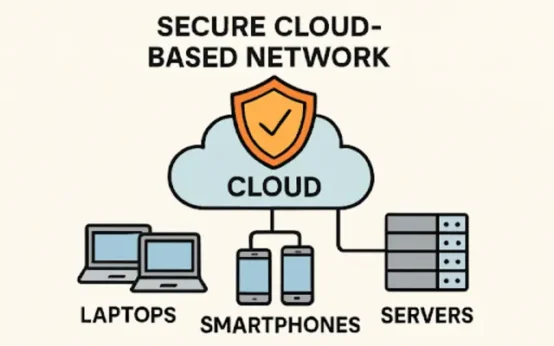🚀 How China’s DeepSeek R1 Outpaced ChatGPT-30 and Sent Shockwaves Through the AI Industry
The battle for AI supremacy has taken a dramatic turn. While ChatGPT-30 was gearing up for a global rollout, an unexpected disruptor—DeepSeek R1—shattered expectations and hit the U.S. market like a news bomb on January 20, 2025—the day of Donald Trump’s presidential inauguration.
This wasn’t just another AI release. It was China’s strategic move—a direct power play in the AI arms race between China and the USA. Despite severe trade restrictions, semiconductor bans, and growing tensions, DeepSeek R1 entered the U.S. market first—leaving OpenAI scrambling.
This is how entrepreneurs, developers, and investors defied every hurdle to position DeepSeek R1 as the first true ChatGPT competitor.
🔥 The AI War: USA’s Attempt to Block China’s AI Expansion
The U.S. government has aggressively restricted China’s access to cutting-edge AI technology for years. The primary weapon? Semiconductor bans.
🔴 In 2023, the Biden administration imposed strict regulations on exporting high-performance AI chips to China, particularly NVIDIA’s A100 and H100 chips, which are crucial for training large-scale AI models.
🔴 By 2024, U.S. sanctions expanded to prevent China from acquiring key AI hardware and essential nanotech chips that power AI models.
🔴 Trump’s return to power in 2025 was expected to bring even harsher AI restrictions, making it nearly impossible for Chinese firms to compete globally.
The message was clear: The U.S. wanted to control AI dominance and cut China out of the equation.
But China’s AI sector had other plans. They wouldn’t wait for access—they would build their future.
⚡ DeepSeek R1: The AI That Launched Before ChatGPT-30
While OpenAI was finalizing ChatGPT-30 for a Q1 2025 release, DeepSeek’s team made a bold, unexpected move.
On January 20, 2025, the same day Trump took the oath as U.S. President, DeepSeek R1 officially launched—not in China, but in the USA.
This wasn’t just a product launch. It was a political and technological statement. China had beaten OpenAI at its own game, placing its model directly in the global market before ChatGPT-30 could even go live.
🔹 What Made DeepSeek R1 So Disruptive?
✅ Advanced Multimodal Capabilities: Unlike previous AI models, R1 wasn’t just about the text—it seamlessly combined AI-generated videos, hyper-realistic images, and voice recognition in real-time.
✅ AI Independence from U.S. Chips: DeepSeek R1 was trained using China’s homegrown AI processors, bypassing U.S. restrictions entirely.
✅ Enterprise-Level AI Automation: It wasn’t just a chatbot—it was built for business automation, making it an instant favourite among global tech startups.
✅ Rapid Adoption: Within 24 hours, R1 had gained 2 million users, making it the fastest-growing AI model ever launched.
DeepSeek had forced the world to take notice with a single, calculated move.
💡 The Geopolitical Fallout: Why This Matters
🇺🇸 The U.S. Reaction: Panic and Policy Shifts
The U.S. government and tech industry were caught off guard. Nobody expected a Chinese AI model to launch inside the U.S. market—especially before ChatGPT-30.
🔴 Tech analysts and policymakers were forced to reassess the AI arms race.
🔴 The U.S. debated even harsher bans on AI collaboration to prevent future disruptions.
🔴 DeepSeek’s entry into the U.S. made global investors rethink the future of AI dominance.
🇨🇳 China’s Response: A New AI Superpower Emerges
For China, this was a defining moment. Despite every trade ban and technological barrier, they had successfully:
✅ Built their AI training ecosystem without relying on NVIDIA or U.S. chips.
✅ Launched an AI model that directly challenged OpenAI on American soil.
✅ Proved that semiconductor restrictions wouldn’t stop their innovation.
It wasn’t just about AI. It was about proving that China could compete—without U.S. technology.
🧩 The Future: What’s Next for DeepSeek R1 and the AI Industry?
With DeepSeek R1 now in the global spotlight, the AI war between the U.S. and China is heating up.
🔹 Will OpenAI push forward with ChatGPT -30’s release, or will they delay upgrades?
🔹 Will the U.S. impose new restrictions to block Chinese AI expansion?
🔹 Will DeepSeek R1’s success force NVIDIA and Intel to rethink their AI hardware strategy?
One thing is clear: DeepSeek R1 has changed the game.
For the first time, a Chinese AI model has directly challenged U.S. dominance—and won.
The next few months will determine whether the AI industry remains U.S.-controlled or it becomes a true global industry.
💡 Final Thoughts: Why This AI War Matters for Businesses
For entrepreneurs and tech companies, this AI battle isn’t just about politics. It’s about who controls the future of AI tools, automation, and innovation.
✅ If AI remains U.S.-controlled, businesses worldwide may face restrictions on technology access.
✅ If China’s AI sector keeps growing, we could see new, competitive AI models enter the market—giving businesses more choices.
✅ AI innovation is moving faster than ever. Companies that adapt early will dominate their industries.
🚀 For the latest updates on AI, global tech trends, and the future of innovation, visit BlinkTechno.com.



 How to Choose the Right GenAI Partner for Your Business in 2026
How to Choose the Right GenAI Partner for Your Business in 2026  Practical Strategies for Building Reliable Network Security in a Cloud-First World
Practical Strategies for Building Reliable Network Security in a Cloud-First World  Why Some AI Models Fail Under Pressure – A DeepSeek AI Case Study
Why Some AI Models Fail Under Pressure – A DeepSeek AI Case Study  Various Ways to Sell Bitcoin for Cash Instantly
Various Ways to Sell Bitcoin for Cash Instantly  Understanding the Fundamentals of Intrusion Prevention Systems
Understanding the Fundamentals of Intrusion Prevention Systems  Elevate Your Living Space: 8 Smart Home Mobility Innovations
Elevate Your Living Space: 8 Smart Home Mobility Innovations